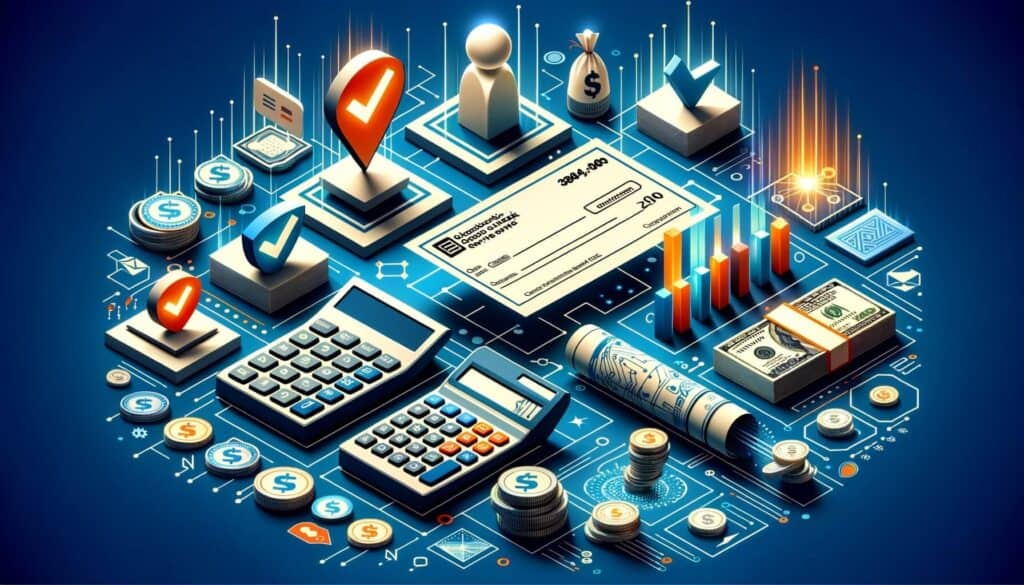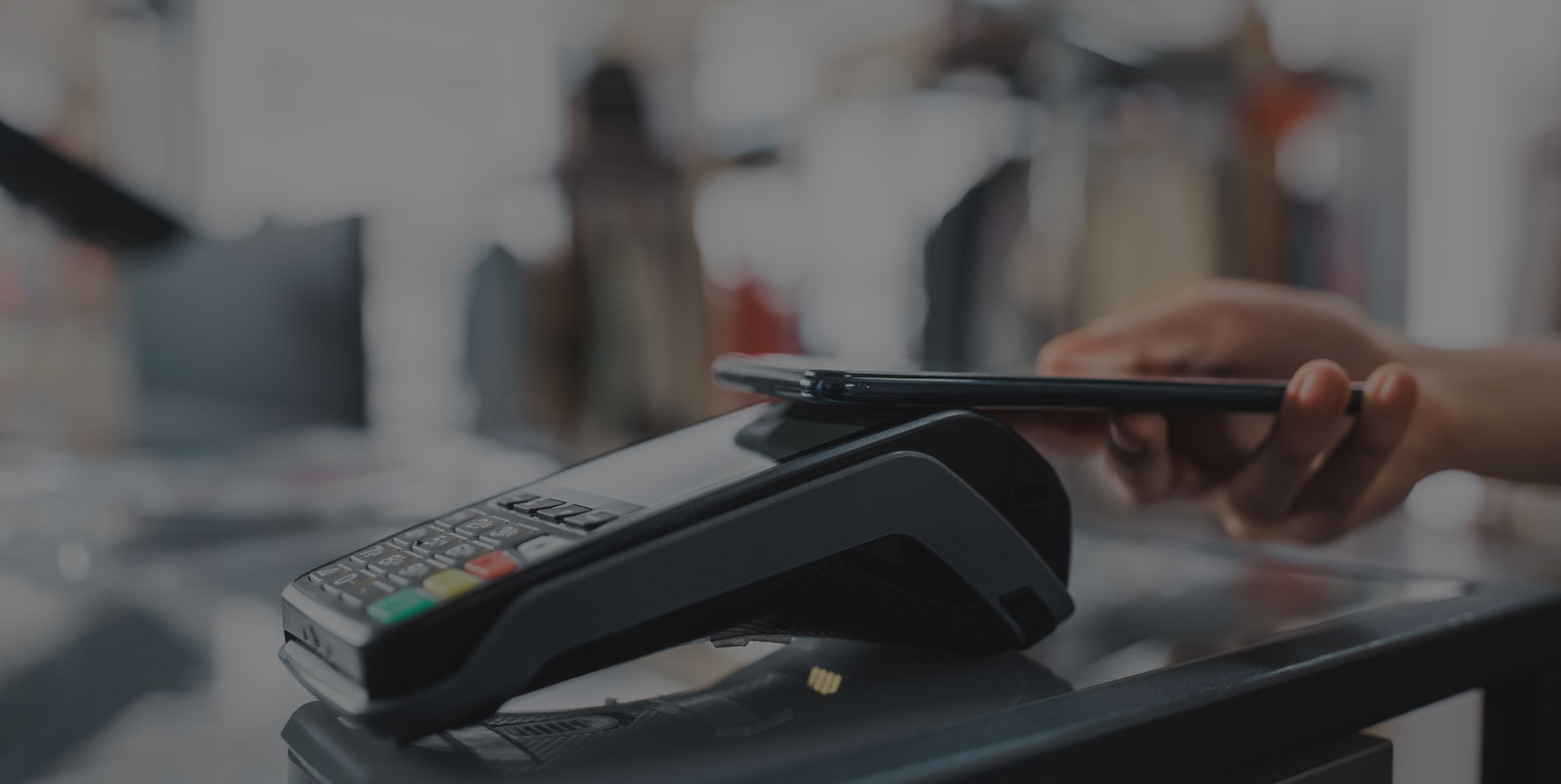By Cindy Gardea January 12, 2025
In today’s digital age, the way we handle financial transactions has evolved significantly. One such advancement is the use of electronic checks, also known as e-checks. Electronic checks offer a convenient and secure method of making payments, whether it’s for personal or business purposes.
In this article, we will explore the ins and outs of electronic checks, including their benefits, how to set them up, choosing the right service provider, ensuring security, associated costs and fees, troubleshooting tips, integrating them into business operations, and a comparative analysis with traditional checks.
Understanding the Benefits of Sending Electronic Checks

Electronic checks offer numerous advantages over traditional paper checks. Firstly, they provide a faster and more efficient way of making payments. With eChecks, the entire process is streamlined, eliminating the need for physical checks to be printed, signed, and mailed. This not only saves time but also reduces the chances of delays or lost checks in transit.
Secondly, electronic checks are more cost-effective. Traditional checks require the purchase of checkbooks, envelopes, and stamps, which can add up over time. In contrast, eChecks can be sent and received electronically, eliminating the need for these additional expenses.
Furthermore, electronic checks are environmentally friendly. By reducing the reliance on paper checks, we can help conserve natural resources and reduce waste. This aligns with the growing trend towards sustainability and eco-consciousness.
Step-by-Step Guide: How to Set Up Electronic Check Payments
Setting up electronic check payments is a straightforward process. Here is a step-by-step guide to help you get started:
1. Choose an Electronic Check Service Provider: Research and select a reputable eCheck service provider that suits your needs. Consider factors such as pricing, features, customer support, and integration options.
2. Gather Required Information: Before you can start sending eChecks, you will need to gather certain information. This includes your bank account details, including the routing number and account number, as well as any additional information required by the service provider.
3. Set Up an Account: Create an account with your chosen electronic check service provider. This typically involves providing your personal or business information, verifying your identity, and linking your bank account.
4. Verify Your Bank Account: To ensure the security and legitimacy of your eCheck transactions, most service providers require you to verify your bank account. This is usually done by confirming small deposits made by the service provider into your account.
5. Add Payees: Once your account is set up and verified, you can start adding payees. These are the individuals or businesses to whom you will be sending electronic checks. Enter their contact information, including their name, email address, and any other required details.
6. Create and Send Electronic Checks: With your payees added, you can now create and send eChecks. Enter the payment amount, select the payee, and include any necessary details or memos. Some service providers also offer the option to schedule recurring payments.
7. Track and Manage Payments: Electronic check service providers typically offer tools to help you track and manage your payments. Take advantage of these features to stay organized and keep a record of your transactions.
Choosing the Right Electronic Check Service Provider

When it comes to choosing an eCheck service provider, there are several factors to consider. Here are some key points to keep in mind:
1. Pricing: Compare the pricing structures of different service providers. Look for transparent pricing with no hidden fees. Consider whether they charge per transaction, a monthly fee, or a combination of both.
2. Features: Evaluate the features offered by each service provider. Some may offer additional functionalities such as invoicing, payment reminders, or integration with accounting software. Determine which features are essential for your needs.
3. Customer Support: Check the availability and quality of customer support. Look for providers that offer multiple channels of support, such as phone, email, or live chat. Read reviews or testimonials to gauge the level of customer satisfaction.
4. Integration Options: If you use accounting or invoicing software, ensure that the electronic check service provider integrates seamlessly with your existing systems. This will save you time and effort in reconciling payments and managing your financial records.
5. Security Measures: Security is of utmost importance when it comes to eCheck transactions. Look for service providers that employ robust encryption and authentication protocols to protect your sensitive information. Additionally, inquire about their fraud prevention measures.
Ensuring Security and Fraud Prevention in Electronic Check Transactions

Security is a top concern when it comes to electronic check transactions. To ensure the safety of your financial information and prevent fraud, follow these best practices:
1. Choose a Reputable Service Provider: Select a trusted and reputable eCheck service provider. Research their security measures and inquire about their compliance with industry standards and regulations.
2. Use Secure Networks: When accessing your electronic check account or initiating transactions, ensure that you are using a secure network. Avoid using public Wi-Fi networks, as they may be vulnerable to hacking or interception.
3. Keep Software Updated: Regularly update your computer or mobile device’s operating system and security software. This helps protect against known vulnerabilities and ensures that you have the latest security patches.
4. Implement Strong Passwords: Create strong, unique passwords for your eCheck account. Use a combination of uppercase and lowercase letters, numbers, and special characters. Avoid using easily guessable information, such as your name or birthdate.
5. Enable Two-Factor Authentication: Two-factor authentication adds an extra layer of security to your electronic check account. Enable this feature if your service provider offers it. This typically involves receiving a verification code via email or text message when logging in.
6. Be Wary of Phishing Attempts: Be cautious of emails or messages that request your personal or financial information. Legitimate service providers will never ask for sensitive information via email. If in doubt, contact the service provider directly to verify the authenticity of the request.
7. Regularly Monitor Your Account: Keep a close eye on your eCheck account for any suspicious activity. Report any unauthorized transactions or discrepancies to your service provider immediately.
Exploring the Costs and Fees Associated with Electronic Checks

While electronic checks offer cost savings compared to traditional paper checks, there are still costs and fees associated with their use. Here are some common costs to consider:
1. Transaction Fees: Most eCheck service providers charge a transaction fee for each payment sent. This fee can vary depending on the provider and the volume of transactions. Some providers offer tiered pricing, where the fee decreases as the transaction volume increases.
2. Monthly Fees: Some service providers charge a monthly fee in addition to transaction fees. This fee may cover additional features or services provided by the provider. Consider whether the benefits outweigh the cost when evaluating providers with monthly fees.
3. Setup or Integration Fees: Certain service providers may charge a one-time setup or integration fee. This fee covers the cost of onboarding and integrating their system with your existing processes or software.
4. Returned Check Fees: If an electronic check is returned due to insufficient funds or other reasons, there may be a fee associated with the returned check. This fee is typically charged by the service provider and can vary in amount.
5. Additional Services: Some service providers offer additional services, such as expedited payments or customized reporting. These services may come at an additional cost. Evaluate whether these services are necessary for your business operations.
It’s important to carefully review the pricing structure and fee schedule of each eCheck service provider to determine the overall cost and value for your specific needs.
Common Challenges and Troubleshooting Tips for Electronic Check Payments
While electronic checks offer many benefits, there can be challenges or issues that arise during the payment process. Here are some common challenges and troubleshooting tips to help you navigate these situations:
1. Payment Rejections: Occasionally, eChecks may be rejected by the recipient’s bank. This can happen due to various reasons, such as incorrect account information or insufficient funds. Double-check the recipient’s details and ensure that there are sufficient funds in your account before initiating the payment.
2. Delays in Processing: Electronic check payments may experience delays in processing, especially if there are issues with the recipient’s bank or the service provider’s system. If a payment is taking longer than expected, reach out to the service provider’s customer support for assistance.
3. Technical Glitches: Like any digital system, electronic check platforms may experience technical glitches or downtime. If you encounter any issues, try logging out and logging back in, clearing your browser cache, or using a different device or browser. If the problem persists, contact the service provider’s support team.
4. Discrepancies in Payment Amounts: In some cases, the recipient may report discrepancies in the payment amount received. This can occur due to currency conversion fees, service provider fees, or other factors. Ensure that you are aware of any additional fees or charges associated with the payment and communicate this clearly with the recipient.
5. Insufficient Payment Records: It’s essential to maintain accurate and organized payment records for your electronic checks. This includes keeping track of payment dates, amounts, and recipients. Consider using accounting or invoicing software that integrates with your eCheck service provider to streamline this process.
Integrating Electronic Check Payments into Your Business Operations
Integrating electronic check payments into your business operations can offer numerous benefits. Here are some tips for a smooth integration:
1. Assess Your Needs: Evaluate your current payment processes and identify areas where eChecks can streamline operations. Consider factors such as payment volume, recurring payments, and the need for integration with existing systems.
2. Train Your Staff: If you have a team responsible for processing payments, provide them with training on how to use the electronic check system. Ensure they understand the benefits, security measures, and troubleshooting tips to handle any issues that may arise.
3. Communicate with Customers: If you are transitioning from traditional checks to electronic checks, communicate this change to your customers. Inform them of the benefits, such as faster processing times and reduced costs. Provide clear instructions on how to make payments using eChecks.
4. Update Invoicing and Payment Processes: Adjust your invoicing and payment processes to accommodate electronic checks. Include clear instructions on how to make payments using eChecks on your invoices and payment reminders.
5. Automate Recurring Payments: If you have recurring payments, take advantage of the automation features offered by electronic check service providers. Set up recurring payments for regular bills or subscriptions to save time and ensure timely payments.
By integrating electronic check payments into your business operations, you can streamline your payment processes, reduce costs, and improve efficiency.
Electronic Check vs. Traditional Check: A Comparative Analysis
While electronic checks offer numerous advantages, it’s important to compare them with traditional paper checks to understand the differences. Here is a comparative analysis of eChecks and traditional checks:
1. Speed and Efficiency: Electronic checks are significantly faster and more efficient than traditional checks. With electronic checks, payments can be initiated and processed within minutes, whereas traditional checks require printing, signing, and mailing, which can take several days.
2. Cost Savings: Electronic checks offer cost savings compared to traditional checks. With eChecks, there is no need to purchase checkbooks, envelopes, or stamps. Additionally, electronic checks can be sent and received electronically, reducing postage costs.
3. Security: Electronic checks offer enhanced security compared to traditional checks. Electronic check service providers employ encryption and authentication protocols to protect sensitive information. Traditional checks, on the other hand, can be lost or stolen, potentially exposing personal or financial information.
4. Environmental Impact: Electronic checks are more environmentally friendly than traditional checks. By reducing the reliance on paper checks, we can help conserve natural resources and reduce waste. Traditional checks contribute to deforestation and require energy-intensive processes for production and transportation.
5. Acceptance and Accessibility: While electronic checks are widely accepted, there may still be instances where traditional checks are preferred or required. Some individuals or businesses may not have the infrastructure or knowledge to accept electronic checks. However, the acceptance of eChecks is growing rapidly, making them a viable option for most payment scenarios.
FAQs
Q1. Are electronic checks secure?
Yes, electronic checks are secure. Reputable eCheck service providers employ encryption and authentication protocols to protect sensitive information. However, it’s important to follow best practices, such as using secure networks and strong passwords, to further enhance security.
Q2. Can I send electronic checks internationally?
Yes, electronic checks can be sent internationally. However, there may be additional considerations, such as currency conversion fees and compliance with international banking regulations. Check with your eCheck service provider for specific details and requirements.
Q3. Can I receive electronic checks as a business owner?
Yes, as a business owner, you can receive eChecks. Simply provide your customers or clients with your bank account details or use an eCheck service provider that offers invoicing capabilities.
Q4. How long does it take for an electronic check to clear?
The time it takes for an electronic check to clear can vary depending on various factors, such as the recipient’s bank and the service provider’s processing times. In general, eChecks clear faster than traditional checks, often within a few business days.
Q5. Can I cancel or stop an electronic check payment?
In most cases, once an electronic check payment has been initiated, it cannot be canceled or stopped. It’s important to double-check the payment details before sending an eCheck to avoid any issues.
Conclusion
Electronic checks offer a convenient, secure, and cost-effective method of making payments. By understanding the benefits, setting up electronic check payments, choosing the right service provider, ensuring security, exploring costs and fees, troubleshooting common challenges, and integrating eChecks into business operations, individuals and businesses can streamline their payment processes and enjoy the advantages of this digital payment method.
As technology continues to advance, electronic checks are likely to become even more prevalent, making them an essential tool for financial transactions in the modern world.
